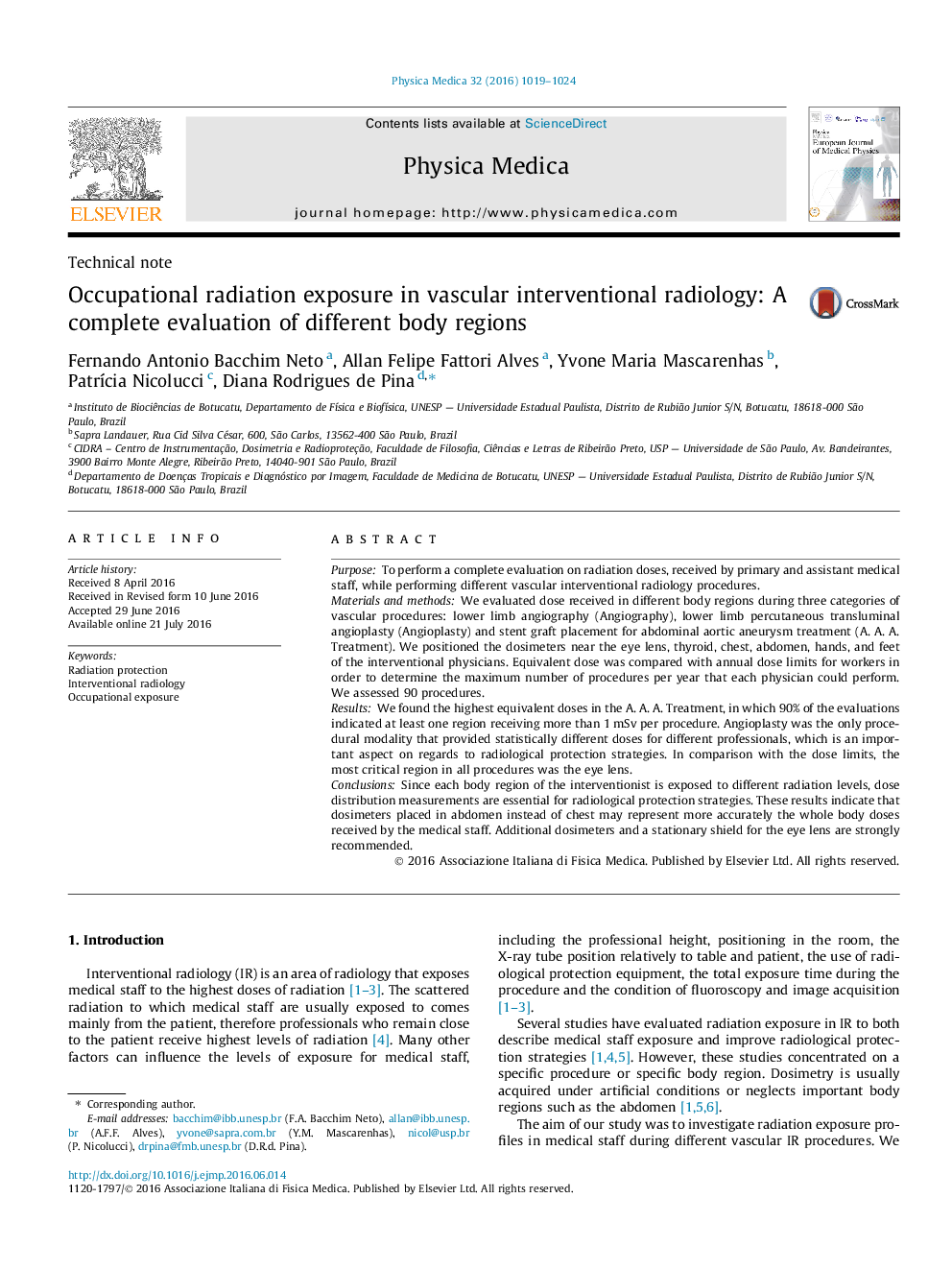| کد مقاله | کد نشریه | سال انتشار | مقاله انگلیسی | نسخه تمام متن |
|---|---|---|---|---|
| 1886831 | 1399990 | 2016 | 6 صفحه PDF | دانلود رایگان |
• We found the highest equivalent doses in the abdominal aortic aneurysm treatment.
• Angioplasty provides different doses for different professionals.
• Dosimeters placed in abdomen may represent more accurately the whole body doses.
• The maximum number of annual procedures is fairly close to the number actually performed.
• A professional properly shielded should not exceed the annual dose limits.
PurposeTo perform a complete evaluation on radiation doses, received by primary and assistant medical staff, while performing different vascular interventional radiology procedures.Materials and methodsWe evaluated dose received in different body regions during three categories of vascular procedures: lower limb angiography (Angiography), lower limb percutaneous transluminal angioplasty (Angioplasty) and stent graft placement for abdominal aortic aneurysm treatment (A. A. A. Treatment). We positioned the dosimeters near the eye lens, thyroid, chest, abdomen, hands, and feet of the interventional physicians. Equivalent dose was compared with annual dose limits for workers in order to determine the maximum number of procedures per year that each physician could perform. We assessed 90 procedures.ResultsWe found the highest equivalent doses in the A. A. A. Treatment, in which 90% of the evaluations indicated at least one region receiving more than 1 mSv per procedure. Angioplasty was the only procedural modality that provided statistically different doses for different professionals, which is an important aspect on regards to radiological protection strategies. In comparison with the dose limits, the most critical region in all procedures was the eye lens.ConclusionsSince each body region of the interventionist is exposed to different radiation levels, dose distribution measurements are essential for radiological protection strategies. These results indicate that dosimeters placed in abdomen instead of chest may represent more accurately the whole body doses received by the medical staff. Additional dosimeters and a stationary shield for the eye lens are strongly recommended.
Journal: Physica Medica - Volume 32, Issue 8, August 2016, Pages 1019–1024
